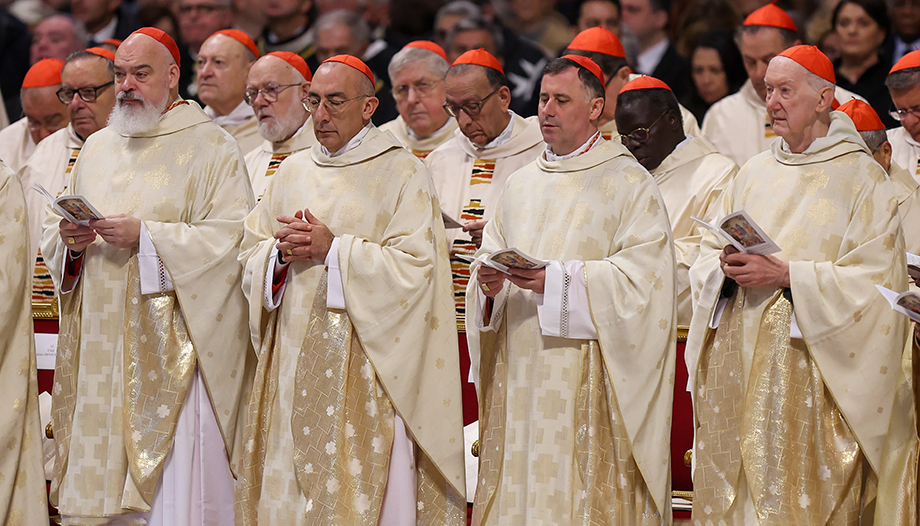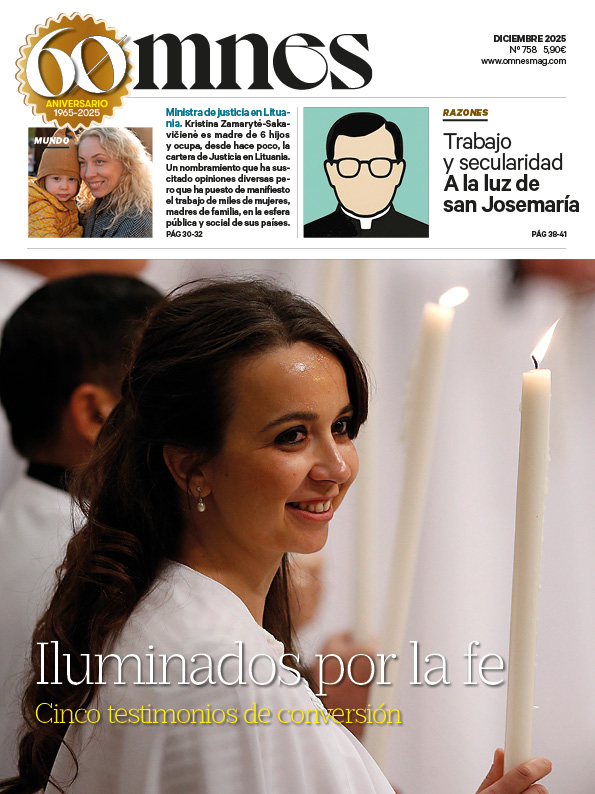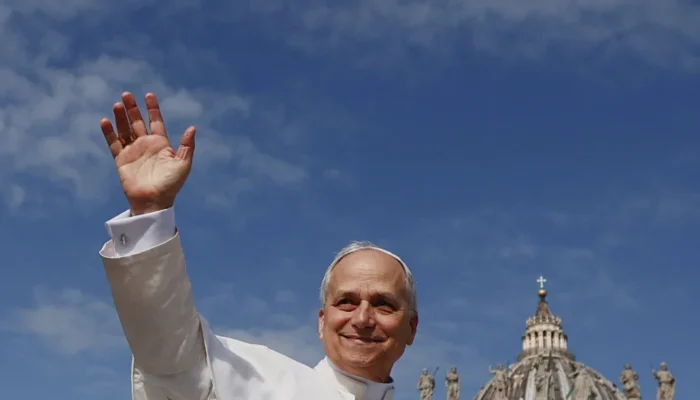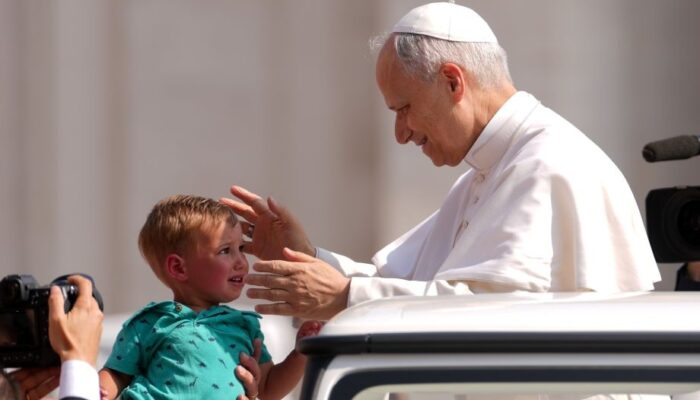In his homily during the consistory for the creation of the new cardinals (7-XII-2024), Pope Francis presents the ascent of Jesus to Jerusalem and the attitude of the disciples. "While Jesus travels a grueling uphill road to Calvary, the disciples think of the flat, downhill road of the victorious Messiah.".
We must not be scandalized, the Pope adds, quoting Manzonibecause "such are the contradictions of the human heart."It is done. But we must be attentive to follow the way of Jesus.
Following the way of Jesus
This means, first of all,"to return to Him and put Him back at the center of it all". For in both the spiritual and pastoral life, "we always need to return to the center, to recover the foundation, to divest ourselves of what is superfluous in order to clothe ourselves with Christ. (cfr. Rm 13, 14)"
Secondly, it means "cultivating a passion for the encounter", for Jesus never walks alone: "His union with the Father does not isolate him from the vicissitudes and pain of the world.". On the contrary, because he came into the world to heal wounds and lighten the burden of the human heart, to remove the burden of sin and break the chains of slavery. Therefore: "What should animate your service as cardinals is the risk of the journey, the joy of the encounter with others and the care of the most fragile.".
Third and last, to follow the way of Jesus also means, "to be builders of communion and unity"because that was Jesus' mission.
For this reason, the successor of Peter tells the cardinals, fixing his gaze on them and taking into account their diverse histories and cultures, which represent the catholicity of the Church: "The Lord calls you to be witnesses of fraternity, artisans of communion and builders of unity. This is your mission".
Mary, daughter, mother and wife
In the solemnity of the Immaculate Conception of the Virgin Mary (December 8, 2024), the Pope celebrated Mass with the new cardinals. In his homily, he invited them to focus on three aspects, three dimensions of beauty in Mary's life: as daughter, as bride and as mother.
The Immaculate as a daughter. Although the texts do not tell us about her childhood, they present her to us as a young woman rich in faith, humble and simple. "She is the 'virgin' (cf. Lk 1:27), in whose gaze is reflected the love of the Father and in whose pure heart, gratuitousness and gratitude are the color and perfume of holiness. (...) For Mary's life is a continuous self-giving.".
Companion and servant of God
The second dimension of her beauty is that of a wife, for she is "the one that God chose as a partner for his salvation project" (cfr. Lumen gentium, 61). This also means, Francis points out, that "there is no salvation without women, because the Church is also a woman.". She replied yes, "I am the handmaid of the Lord." (Lc 1, 38).
"Servant' - Francis observes - not in the sense of 'submissive' and 'humiliated', but as a 'reliable', 'esteemed' person, to whom the Lord entrusts the most precious treasures and the most important missions.". (This, it should be noted, should be characteristic of every Christian, more to the extent of awareness of one's own vocation and mission).
Hence, its beauty reveals "reveals a new aspect: that of the fidelity, loyalty and care that characterize the reciprocal love of spouses.". This is how St. John Paul II sees it when he writes that the Immaculate "has accepted the election as Mother of the Son of God, guided by spousal love, which 'consecrates' a human person totally to God." (Encyclical Redemptoris Mater, 39) (Attention, because Francis is describing the substance of spousal love).
And finally, the third dimension of beauty, that of mother. In fact, we always represent her alongside her children in the various circumstances of her life. "Here the Immaculate is beautiful in her fruitfulness, that is, in her knowing how to die in order to give life, in her forgetting herself to take care of those who, small and defenseless, cling to her.". (This is undoubtedly a vocation to motherhood, including the so-called "spiritual motherhood").
Real, achievable and concrete model
However," the successor of Peter points out, "there is a risk that we may consider Mary's beauty as something distant, too lofty, unattainable.
But Mary is a real, attainable and concrete model. And in fact, we receive that beauty in seed with baptism. "And with her we are entrusted with the call to cultivate it, like the Virgin Mary, with filial, spousal and maternal love, grateful in receiving and generous in giving, men and women of 'thank you' and 'yes', said with words, but above all with life.".
Three proposals of the Pope for the Jubilee Year
The message for the 2025 World Day of Peace ("Forgive us our trespasses, grant us peace.") is part of the ordinary Jubilee that has just begun. It has four parts.
First of all, we are invited to situate ourselves "listening to the cry of threatened humanity"(John Paul II spoke of the "structures of sin" (Encyclical Letter Sollicitudo rei socialis, 36). It is convenient that "all, together and personally, we feel called to break the chains of injustice and, thus, proclaim God's justice" (n. 4).
The second part asks "A cultural change: we are all debtors". "The cultural and structural change to overcome this crisis will come about when we finally recognize that we are all children of the Father and, before Him, confess that we are all debtors, but also all necessary, necessary to one another." (n. 8).
Third, Francis makes three concrete proposals: 1)"a notable reduction, if not a total cancellation, of the international debt burdening the destiny of many nations"(John Paul II, Apostolic Letter Tertio millennio ineunte, 51); 2) "the elimination of the death penalty in all countries of the world.s" (cfr. Bull Spes non confunditfor the 2025 Jubilee, 10); and 3) "The Jubilee of 2025, 10)".the establishment of a world fund to eliminate hunger once and for all"and facilitate sustainable development in the poorest countries, in contrast to climate change (cfr. Fratelli tutti262 and other recent interventions of the Pope).
The last part is entitled "The goal of peace". This involves a profound and practical change of attitudes at the personal and social level, a "disarmament of the heart" (John XXIII)."Sometimes, something simple is enough, such as 'a smile, a gesture of friendship, a brotherly look, a sincere listening, a free service'" (n. 14 of the message; cf. Spes non confundit, 18). For, "in effect, peace is not achieved only with the end of war, but with the beginning of a new world, a world in which we discover ourselves different, more united and more brothers and sisters than we had imagined.".








